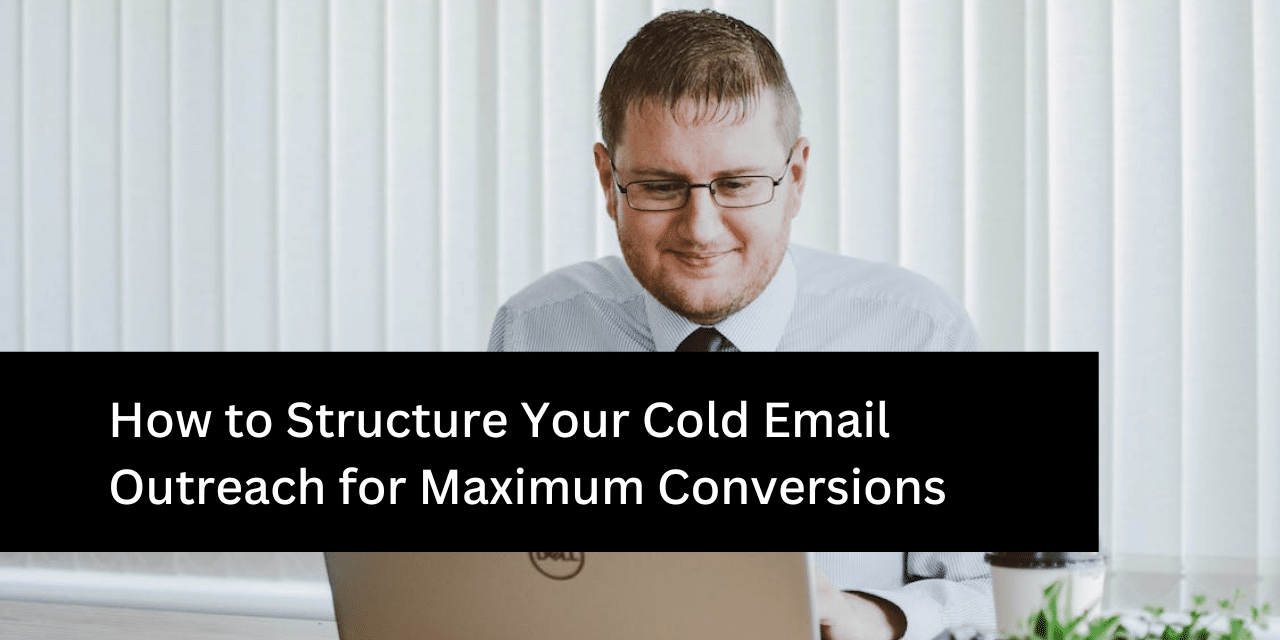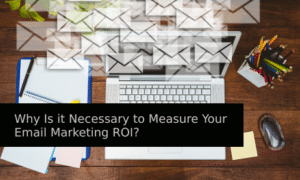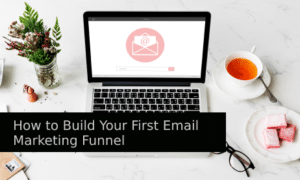Are you struggling with your cold email outreach? Are your emails being left unopened or are never replied to?
You’re not alone. Most people struggle with this part of their business. But the truth is, if you want to succeed in sales, you need to be able to reach out to potential customers and start a conversation using email outreach.
Cold email outreach is a great way to reach potential customers and drive conversions. With a well-crafted cold email, you can establish a connection with your target audience and convince them to take the next step in the sales process.
That’s where this guide comes in. We’ll show you how to structure your email so that it stands out from the rest and increases your chances of getting a response.
Also, we’ll give you some tips on how to write engaging copy that will make your readers want to learn more about what you have to offer.
What is Effective Email Outreach?
Effective cold email outreach is the process of reaching out to potential customers or clients who have had no prior contact with your company.
It involves developing a list of target contacts and then sending them personalized messages in an attempt to establish a relationship.
The key to successful cold outreach is to make sure that your message is relevant and interesting to the recipient.
It should also be clear that you are not simply trying to sell them something, but rather that you are interested in establishing a dialogue.
If done correctly, cold outreach can be an effective way to generate new leads and grow your business.
Why You Need To Know How To Do Cold Outreach Effectively?
There are many reasons to learn how to do cold outreach effectively. In today’s business world, it is more important than ever to be able to reach out to potential customers and clients.
Cold outreach can help you to build relationships, generate new leads, and even close deals.
However, cold outreach can also be time-consuming and challenging. That’s why it’s important to learn how to do it effectively. The more you know about cold outreach, the more likely you are to be successful in your efforts.
Steps for Effective Email Outreach

Many marketers and salespeople take a hit-and-hope approach to their outreach email, but there is no reason you can’t use tried and tested rules in order to craft the perfect outreach email funnel.
On a fundamental level, there are really four steps, which are:
- Determine your ideal client
- Find the likely point of contact
- Craft a compelling message
- Follow up
This might look overly simplistic on the surface but there are micro-strategies you can implement in each step that can help you stand out.
1. Determine your ideal client
Determining your client should be fairly straightforward and is just a matter of figuring out who you want to work with. This can be as simple as searching on LinkedIn for companies with whom your product or service can provide value to.
2. Finding the likely point of contact
Finding the ideal point of contact is a bit trickier, but still no huge feat. The first thing to note is that you must always be messaging a real person who is in charge of making key business decisions.
Do not email contact or info inboxes as these are usually used for spam. If possible, also avoid secretaries and receptionists.
The goal is to go straight to the person in charge, whether that’s a CEO, a marketing manager, a content manager, etc.
There are two very effective and free tools you can use to make this process a lot easier.
Hunter.io (Chrome plugin) – Hunter.io is a tool that will search websites for emails, so to find email addresses within a company, you can use the site or plugin.
Below, when used on the Prospero website, Hunter has pulled 3 emails.
The contact email, which we will ignore, but also two more. By clicking on the sources dropdown, you can find out more about the other email addresses and see if they’re the point of contact you want.
Apollo Chrome plugin – Another plugin is Apollo, which helps you to extract emails from LinkedIn. I personally find this tool a lot more effective.
As an example let’s say we want to find the founder of Prospero, their email isn’t showing up on Hunter.io, thus I would follow the steps below.
- Install the Apollo Chrome plugin and set up a free account
- Google Prospero on Linkedin or search on LinkedIn directly
- On the company page, click on People and search for the person’s position, whether it’s founder, marketing manager, etc.
- Click on the person’s profile. When you enter the profile, the Apollo plugin activates on the right side of the browser.
- Click View email address, and if it is stored on LinkedIn, it will show.
You can then add this lead to your CRM or email list ready for outreach.
3. Craft A Compelling Message
There’s one important thing to remember with cold outreach and that is that you don’t matter. Your wants, needs, goals, and even your name, don’t really matter to the person you’re emailing, so keep everything lead-centric and focus on them.
You need to understand that when your email is opened, everything is centered around providing value to the person opening the email. You need to be giving them an offer they cannot refuse, as the saying goes.
Once you have the email of the prospect you want, it’s time to get into crafting your email, and there are certain elements that must go into an effective cold outreach message.
Personalized subject
A personalized subject is needed to grab attention, but you don’t need to go overboard with a clickbait title. Keep it simple at best.
Some examples.
Hi [Name] – Quick question about…
Hi [Name] – [Company] Query
Hi [Name] – Would love to talk about [Value proposition]
Greeting
A greeting is fairly straightforward. Hi [name] will suffice. We don’t want to engage in fluff talk, but get straight to the point and keep our email as short as possible.
Personalized first line
A personalized first line aims to build rapport with someone by showing you’ve done your homework and that your email has been customized just for them since people can spot a mail merge a mile away.
This includes finding out about who that person is, their interests, location, hobbies, common interests, and anything else you might comment on to a friend.
In the example above with the founder of Prospero, I noticed they have an article about how they started their company, which is full of information to draw from for a personalized first line
An Example:
“Hi, Tomer,
I came across your story on HuffPost and found it really inspiring how you started with only $300 in your pocket, working out of your apartment, and all while juggling school! That’s crazy…”
This would be impossible to fake with your standard mail merge, and the personalization will stand out amongst everyone else.
To add these to your existing mail merge, you simply need to add a first-line field. You’ll still have to do your research on potential leads.
Value Giving Proposition
The next step is you need to get to the point of what you want, but while doing so in a way that is lead-centric. Remember, what you want is not important, only what you can provide.
If you’re a content creator, you need to think of ways to give value. That could be free content, free promotion, or lead generation content.
If you’re selling a service to a SaaS business, you need to tell them what it can do for them specifically.
Content Marketer Example:
“After doing a content gap analysis on your blog, I’ve found there are a few holes in your content that I’m certain can bring more organic, buyer traffic to your products via your blog. I’d like to contribute something for free to show you exactly the kind of results I’m talking about.”
SaaS Company (Web design) Example:
“I wanted to reach out because after looking over your company website I found that due to you’re design and site speed you’re very likely losing visitors quickly. I’d like to send over a free audit of changes you can make that have tripled the results of clients I’ve worked with in the past”
As you can see in both emails, you’re asking for nothing while also offering work for free that would directly benefit the company. There is also a hint of loss aversion bias thrown in, which is a powerful method of persuasion you can sprinkle into your pitch.
Call-To-Action

Source: Uplead.com
Your call to action tells your reader exactly what you want them to do. The email has been designed to funnel them down to answering a yes or no question.
You can experiment with open-ended questions depending on who you are and what your service is, but remember, we want to keep everything as easy as possible.
Example:
“Do you want me to send it over?”
“Would you like to see what I’m talking about?”
“I can send it over today, sound good?”
There is also psychology involved here too, but primarily you just want your foot in the door. You want to show them what you can do so they see you as a person of value. That is ultimately the only way someone is going to pay you after all.
The goal is for them to think that if you can do this much for free, you can deliver over the long run.
Sign-Off
Like the greeting, there is no need to overthink your sign-off, and a simple “best regards” and your name followed by any contact details you wish to include.
Make it easy for people to find out about you if they are interested. Include a clear picture in your signature, your website or portfolio, LinkedIn, email, and phone number
4. Following up
When it comes to following up, it’s best to keep these messages even simpler while still adhering to the personalization of the initial email.
Remember to track whether your emails are being opened so you aren’t repeatedly emailing dead inboxes. A tool like a Streak can help with this.
As a general rule, it’s best to wait 2-3 days before sending an initial follow-up email and a further 2-3 days before sending a final one. If people aren’t replying to your emails, it’s likely because they aren’t interested and it’s better to move on than to try and chase down a cold lead.
Here’s a follow-up example:
Hi [Name],
Just bumping this email up in case it got lost.
Would you be interested in [Previous Offer]
Regards,
[Signature]
If you have some form of a testimonial, social proof, or something else that adds legitimacy to your product or service, you could also include this in the message body.
Social proof is an extremely powerful method of persuasion.
Key Considerations For Successful Cold Email Outreach
To give a slight recap, here are some important things to keep in mind to ensure your cold email campaign is successful.
First, it’s important to have a well-crafted email. Your email should be clear and concise, and it should get straight to the point.
You want to make sure your email stands out in the recipient’s inbox, so include all of the personalization elements above and avoid unnecessary fluff.
It’s also important to consider to who you’re sending your emails. Make sure you’re targeting your emails to individuals who are likely to be interested in what you have to offer.
This will help ensure that your emails are well-received and decrease the chance of them being marked as spam.
Finally, don’t forget to track your results. Keep an eye on your open and click-through rates so you can adjust your strategy as needed.
Often people mistake emails for being ignored when they simply haven’t been opened or are being sent to an old inbox.
To Wrap Up
Cold email outreach can be a great way to get your message out there, but remember that it is not a one-size-fits-all solution.
Take the time to research your prospects and craft personalized, targeted emails that demonstrate your understanding of the recipient’s needs.
If you put in the effort, you can build strong, long-term relationships with the right people that will help your business grow. We hope this article has given you a few ideas on how to structure your cold outreach emails for maximum conversions.
Author
Chris Hardy is a full-time content marketer running a work-from-home blog and growing YouTube channel. A teacher at heart, Chris spent 10+ years as a professional dance and English teacher before diving into the world of online business where he made a name for himself on YouTube exposing “make money” scams.




